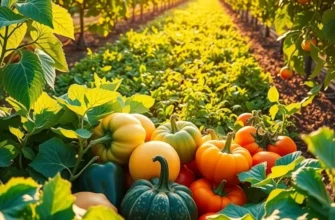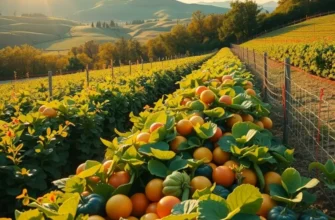In a world increasingly aware of environmental challenges, choosing snacks that are sustainably sourced is a powerful way to create a positive impact. By making conscious decisions about the snacks we consume, we not only nourish our bodies but also support eco-friendly practices. This guide aims to empower environmentally-conscious individuals with practical tips and information to help navigate the vast landscape of snack options, ensuring that your choices align with your values of sustainability and health.
Understanding Sustainability in Snacks

Sustainable snacks embody the principle of meeting our current needs without compromising the ability of future generations to meet their own. They prioritize environmentally-friendly practices from cultivation to packaging, ensuring minimal impact on the planet. An essential aspect lies in responsible ingredient sourcing, a practice with immediate benefits for ecosystems and communities.
Key to responsible sourcing is emphasis on diversity and soil health, often achieved through regenerative agriculture. By rotating crops and using composts instead of synthetic fertilizers, farmers enhance biodiversity and reduce greenhouse emissions. Moreover, choosing locally-sourced ingredients cuts down carbon footprints by minimizing transportation emissions.
Sustainable sourcing extends beyond the farm. Ethical considerations are vital, ensuring that workers receive fair wages and maintain safe working conditions. This is where certifications like Fair Trade come into play, assuring consumers are purchasing products that align with these ethical standards.
Another critical certification to watch for is Organic. Organic products are cultivated without synthetic fertilizers or pesticides, promoting ecological balance and conserving biodiversity. Selecting snacks with an organic label reduces exposure to harmful chemicals, benefiting both ecosystems and human health.
The Non-GMO Project Verified label is equally significant, addressing concerns over genetically modified organisms. This ensures products are made without genetically engineered ingredients, supporting biodiversity and preserving the integrity of natural ecosystems.
Consumers should be cautious, however, about misleading claims on packaging. Terms like natural or eco-friendly can be vague and unregulated, often leading to greenwashing—where products are falsely marketed as sustainable. It’s crucial to rely on verified certifications and ingredient lists rather than generic claims.
Reading and understanding labels is paramount. Look for concise ingredient lists, highlighting sourcing details and certifications. Packaging should also be scrutinized; options made from recyclable or biodegradable materials, or those that use minimal packaging, are preferable.
Engaging directly with producers whenever possible can provide deeper insight into their practices. Farmers’ markets and local coops are excellent places to start conversations about sourcing and sustainability practices. Additionally, online platforms and communities dedicated to sustainable consumption can offer insights and recommendations.
For those interested in making eco-friendly snacking a part of their lifestyle, it might be useful to explore tips on storing these snacks efficiently. Visiting resources like this eco-smart kitchen storage guide can assist in maintaining the quality and reducing waste at home.
Choosing Wisely: Tips for Sustainable Snacking

Embracing sustainable snacking begins with understanding the source of your food. Opting for locally produced snacks reduces the carbon footprint by minimizing transportation distances. Local products often support regional farmers and contribute to the local economy. This choice not only promotes freshness but also aligns with the seasons, sparking creativity in snack options as produce changes throughout the year.
When evaluating local versus imported products, consider the environmental impact of transporting goods across long distances. Imported snacks may carry hidden ecological costs. They often require extensive shipping and packaging, which contribute to higher greenhouse gas emissions.
Moreover, paying attention to seasonality can greatly enhance sustainability in your snacking habits. Seasonal produce is typically more flavorful and nutritious, as it is picked at peak ripeness. It also supports the natural growth cycles of plants, reducing the reliance on artificial farming methods.
Another significant factor in sustainable snacking is packaging. Snacks with minimal packaging or those packaged in biodegradable or recyclable materials help reduce waste. Bulk purchasing can also be a sustainable option, reducing the need for individual packaging.
Brands prioritizing sustainability are growing in number. These brands often emphasize ethical sourcing, fair trade, and environmental responsibility. Exploring products from these companies can be a powerful statement towards supporting environmental stewardship.
Visiting farmer’s markets is an excellent way to discover sustainable, seasonal, and local snacks. Direct interaction with producers can provide insights into how items are grown and harvested. Many markets feature vendors offering organic produce, naturally aiding a more health-conscious diet.
When you’re in the mood to prepare your own snacks, try incorporating organic ingredients. Organic farming practices avoid synthetic fertilizers and pesticides, promoting biodiversity and soil health. Simple recipes such as a fruit and nut mix, using seasonal and organic components, are not only delicious but also eco-friendly.
Sustainable Snack Brands for Diverse Dietary Needs:
- For gluten-free snacks, explore options that use ancient grains. These grains are often cultivated with less environmental impact compared to conventional wheat.
- Those following a plant-based diet can look for snacks featuring legumes or pulses, which enrich the soil through nitrogen fixation.
- Seek out snacks that integrate whole foods, focusing on minimal processing to preserve nutritional value.
For those looking to enhance their sustainable kitchen practices further, consider integrating low waste methods into daily routines as outlined in this guide on low-waste cooking.
In summary, by understanding and implementing sustainable sourcing principles in your snacking habits, you can take meaningful steps toward a healthier planet. This involves embracing local and seasonal produce, choosing brands committed to sustainability, and minimizing waste through careful packaging considerations. With these strategies, sustainable snacking becomes not only achievable but also fulfilling and delicious.
Final words
Making sustainable choices when it comes to snacks is not just a trend; it’s a commitment to a healthier planet and a healthier you. By understanding what makes snacks truly sustainable and equipping yourself with practical tips to choose wisely, you can enjoy delicious treats that align with your eco-conscious values. Every small choice counts, and by prioritizing sustainability in your snacking habits, you contribute to a larger movement that supports ethical sourcing and environmental well-being. Let your next snack be a step toward a better future for the planet.








